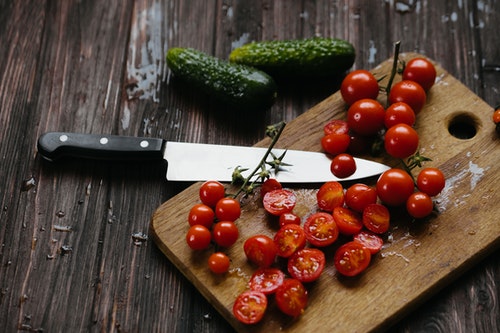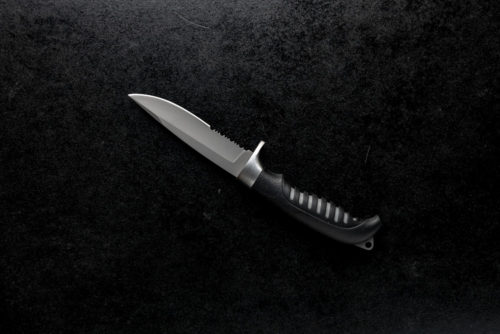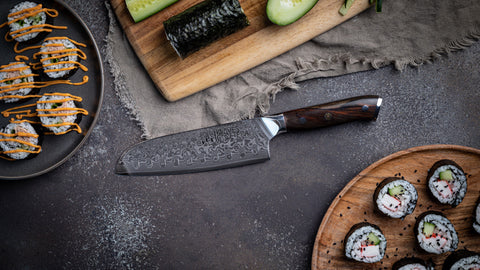What makes a good steak knife? This is a question that every kitchen enthusiast has probably pondered at some point. A good steak knife is not just about cutting through steak; its about providing a clean, smooth cut without tearing the meat, enhancing your dining experience. In this article, we will dive deeply into the aspects that define a good steak knife, and why investing in one can truly elevate your mealtime.
Understanding what makes a good steak knife is crucial for anyone who loves steak, whether you’re a professional chef or someone who enjoys a good meal at home. Steak knives have a specific purpose: to cut through thick cuts of beef without tearing the meat. Choosing the right steak knife can make a significant difference in your culinary experience.

Types of Steak Knives
There are mainly two types of steak knives: serrated and non-serrated (or straight-edge). Each has its own set of advantages and disadvantages, and your choice will depend largely on your personal preference and the kind of steaks you usually enjoy.
Serrated Steak Knives
Serrated steak knives have a scalloped edge that helps in slicing through meats effortlessly, even if the steak is slightly tough. The serrations grip the meat, making it easier to make a clean cut. However, they can be more challenging to sharpen compared to non-serrated knives.
Non-Serrated Steak Knives
Non-serrated steak knives, also known as straight-edge knives, offer a cleaner cut and are easier to sharpen. These knives require more frequent maintenance but provide a better cutting experience, especially if you are dealing with tender cuts of steak.

Material Matters: Blade Composition
The material of the blade is crucial in determining the knife’s quality and performance. High-carbon stainless steel is often considered the best material for steak knives. It offers excellent edge retention, durability, and rust resistance.
Stainless Steel
Stainless steel blades are resistant to rust and corrosion, making them a popular choice for steak knives. They are durable and require less maintenance than other types of steel. However, they might not hold their edge as long as high-carbon steel blades.
High-Carbon Steel
High-carbon steel blades are incredibly sharp and maintain their edge for longer periods. They do require more care to prevent rust but offer superior cutting performance compared to stainless steel blades.

Handle Design: Comfort and Control
The handle of a steak knife plays a significant role in ensuring comfort and control during use. A well-designed handle will fit comfortably in your hand, providing a secure grip without causing strain.
Material Options
Handles are typically made from wood, plastic, or stainless steel. Wooden handles offer a classic look and good grip, but they require more maintenance. Plastic handles are durable and easy to clean, while stainless steel handles provide a sleek, modern appearance.
Ergonomics
An ergonomic handle design ensures that the knife feels balanced in your hand, reducing fatigue during use. Look for handles that have been designed with contours to fit the natural shape of your hand.

Balance and Weight
The balance and weight of a steak knife are crucial for its overall performance. A well-balanced knife will feel comfortable in your hand and provide better control during use. The weight should be enough to help with cutting but not so heavy that it becomes cumbersome.
Maintenance and Care
Proper maintenance and care of your steak knives will extend their lifespan and ensure they perform optimally. Always hand wash your steak knives and dry them immediately to prevent rusting and other damage.
Sharpening Your Steak Knives
Keeping your steak knives sharp is essential for their performance. While serrated knives are more challenging to sharpen, there are specialized sharpeners available. Non-serrated knives can be sharpened using a standard knife sharpener or sharpening stone.
Price vs. Value
When buying steak knives, its important to consider the price versus the value youre getting. High-quality steak knives might be more expensive, but they are a worthwhile investment that will last longer and perform better.
Brands to Consider
There are several brands known for producing high-quality steak knives. Some of the top brands include Wsthof, J.A. Henckels, and Victorinox. These brands offer a range of steak knives that cater to different budgets and preferences.
How to Choose the Right Steak Knife for You
Choosing the right steak knife depends on your personal preferences and needs. Consider the type of blade, material, handle design, balance, and weight to find a knife that suits your requirements.
Conclusion
A good steak knife is an essential tool for any kitchen enthusiast. By understanding what makes a good steak knife, you can make an informed decision and enjoy a better dining experience. Remember to choose a knife that fits your needs, maintain it properly, and it will serve you well for many years.
Frequently Asked Questions
What is the best material for steak knife blades?
High-carbon stainless steel is considered the best material for steak knife blades due to its excellent edge retention, durability, and rust resistance.
Are serrated or non-serrated steak knives better?
Both serrated and non-serrated steak knives have their advantages. Serrated knives are better for cutting through tougher meats, while non-serrated knives provide a cleaner cut and are easier to sharpen.
How should I maintain my steak knives?
Always hand wash your steak knives and dry them immediately after use. Keep them sharp using a specialized sharpener for serrated knives or a standard sharpener for non-serrated knives.
Additional Resources
For more information on kitchen knives, you can visit this external link.
As an Amazon Associate, I earn from qualifying purchases.


